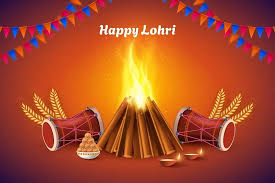A Celebration of Harvest and Hope
Introduction to Lohri
Lohri is one of the most vibrant festivals celebrated in North India, especially in Punjab, Haryana, and parts of Himachal Pradesh. Observed every year on 13th January, it marks the end of winter and the beginning of the harvest season. It is a festival of joy, gratitude, and community bonding.
The Significance of Lohri
Traditionally, Lohri is associated with the harvest of Rabi crops, especially sugarcane, wheat, and mustard. Farmers express their gratitude to nature and seek blessings for prosperity. The festival also holds cultural significance as it coincides with the winter solstice, after which days begin to grow longer.

Bonfire and Festivities
The highlight of Lohri is the evening bonfire, around which families and neighbors gather. People sing traditional folk songs like “Sundar Mundriye”, dance bhangra and giddha, and throw rewari, peanuts, popcorn, and sesame seeds (til) into the fire as offerings.
This bonfire is symbolic—burning away negativity and welcoming a season of abundance and positivity.
Lohri for New Beginnings
Lohri is especially celebrated with grandeur in households that had a newborn baby or a recent marriage. Such events bring added joy, and special celebrations include traditional songs, sweets, and cultural rituals.
Delicious Traditional Foods
Lohri is incomplete without its delicious food. Makki di roti and sarson da saag, til ladoo, gur (jaggery) sweets, and gajak are enjoyed during this festive time, symbolizing warmth, togetherness, and richness of the land.

Leave a Reply